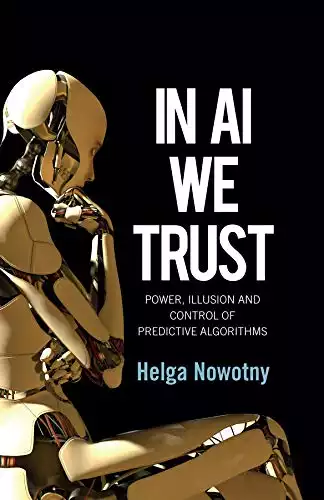Introduction: The Unsettling Reality of AI
Artificial Intelligence (AI) has made enormous strides in the past few years, becoming an integral part of various sectors including healthcare, finance, and entertainment. Its influence is felt in every facet of our lives, simplifying processes and introducing innovative solutions. Like every technological advancement, AI is a double-edged sword. As the benefits of AI become increasingly apparent, so do the risks and threats it poses to society. Among the most potent of these threats is the erosion of trust due to the proliferation of deep fakes.
Table of Contents
Deep Fake Videos and Voice Apps: A Rising Menace
The Role of Data in AI and Deep Fakes
Artificial Intelligence, the backbone of deep fake technology, operates on the principle of learning from data. For these models to generate realistic deep fakes, they require massive amounts of data for training. It is us, the users, who are unknowingly supplying this data, feeding the AI models with the fuel they need to learn and improve.
Every video we upload, every voice message we send, every selfie we post on social media – all of it contributes to the vast data ocean from which AI draws its insights. This omnipresent data availability is a double-edged sword. On one hand, it drives progress and innovation in AI; on the other hand, it paves the way for misuse, such as the creation of deep fakes.
Deep Fakes and the Erosion of Trust
Our increasingly digital world is facing a rising wave of deep fake videos and voice apps that are escalating at an alarming pace. These AI-powered tools, which were once in their embryonic stages, have advanced significantly, encroaching upon the critical trust factor in our digital interactions.
Deep fakes, in their early avatars, were largely targeted at public figures such as actors and politicians who had a plethora of video and audio samples available online. But today, the landscape has changed drastically. With smartphones being a common fixture in our lives and numerous platforms available for sharing content, deep fake technology is infiltrating the masses, enabling the creation of personalized deep fakes at a scale never seen before.
The Alarming Advancement of Deep Fakes
The sophistication and believability of these deep fakes are reaching disturbing levels. With advancements in machine learning and neural networks, the ability to generate highly convincing deep fakes is becoming easier. These manipulations are so skillfully crafted that distinguishing them from real content is becoming a daunting task.
As these deep fakes become more lifelike and indistinguishable from authentic content, the threat they pose escalates. They challenge our ability to discern truth from falsehood, eroding trust, and promoting misinformation and deception. In a world where you cannot believe what you see, we must tread carefully, understanding the potential perils that these deep fakes present to our digital trust ecosystem.
Aiding AI Algorithms: A Pandora’s Box of Our Own Making
Ironically, our own actions are enabling the perfection of these AI technologies. When we sign up and use deep fake tools, we inadvertently provide them with an enormous amount of data. Each interaction, each piece of content created, is a data point that feeds the AI algorithms.
This data serves as raw material, aiding the machines in refining their processes, improving their output, and creating even more convincing deep fakes. This continuous data supply is the oxygen that AI breathes, making it more efficient, adaptable, and unfortunately, dangerous.
Impending Scams and Societal Decay: A Harbinger of Chaos
The implications of deep fake technology are diverse and deeply troubling. As these AI-generated deep fakes become more convincing, their potential misuse in various forms of fraud, identity theft, and misinformation campaigns becomes more pronounced. These technologies could be exploited to create convincing scams, leading to devastating financial losses for individuals and businesses alike.
The spread of deep fakes could also lead to societal decay in the long run, as the foundational trust that binds our communities together is slowly eroded. The impact on society would be far-reaching, affecting everything from personal relationships to political discourse, fostering an environment of pervasive distrust and uncertainty.
As deep fake technology continues to advance, it capitalizes on our cognitive biases, which are the systematic errors in thinking that affect the decisions and judgments that people make. These inherent biases can cloud our judgment, making us more susceptible to the deceptive allure of deep fakes.
For example, confirmation bias, which is the tendency to favor information that confirms one’s existing beliefs or values, can be manipulated by deep fakes to propagate disinformation. When encountering a deep fake that aligns with their internal biases, individuals may disregard its authenticity due to the cognitive dissonance, leading to a skewed perception of reality. In this way, deep fakes can exploit our cognitive biases, fostering an environment of misinformation and mistrust.
The proliferation of deep fakes and fake news poses a grave threat to society. It fuels misinformation, leading to social discord and potential chaos. In the digital world, ‘poisoning attacks’, where the data used to train an AI system is tampered with, have become a concern.
The societal decay doesn’t end at spreading misinformation; it extends to potential blackmail, fraud, and the manipulation of political discourse. It’s crucial to acknowledge and address these potential threats, as they could lead to irreversible damage to societal trust and cohesion. In this digital era, we must continually question, verify, and be aware of the long term potential misuse of AI technologies.
Example of Scams using Deep Fake Voice and Video Technology
Video Based Scams
The rapid evolution and sophistication of deep fake technology raise significant concerns, extending beyond traditional scams to the potential disruption of interpersonal trust and communication.
Consider this scenario: your unique mannerisms and voice are mimicked to create a deep fake video (From multiple videos and audio clips you have uploaded to deep fake tools or social media platforms), so convincing that even your closest friends and family can’t discern its artificial nature. This deep fake version of ‘you’ is then used to initiate a video call with your loved ones, carrying out conversations, and possibly soliciting sensitive information or manipulating them into a scam.
Now, imagine the aftermath – the trust shattered, the doubt seeded. Would your family and friends ever trust another video call from you? This is the unsettling reality that deep fake technology can potentially introduce. As the technology advances, the line between reality and artificially generated content becomes increasingly blurred, leading to a potential trust crisis in digital communication. It’s a pressing concern, and one that requires attention from not only technology developers and lawmakers but also the broader public that could be affected by its misuse.
Audio Based Scams
The application of deep fake technology is not limited to just videos; it extends to audio as well, presenting an entirely new arena of potential misuse. The technology is now sophisticated enough to mimic and personalize voices with alarming precision. Imagine a scenario where an individual receives a phone call, seemingly from a loved one, that is actually a product of deep fake voice technology.
The voice is indistinguishable from the real person’s, making it a perfect tool for deception. Perpetrators could effectively use your voice to interact with your friends and family, placing them in a position where they unknowingly fall for scams. The damage inflicted by such an attack extends beyond financial losses; it disrupts the trust fabric among families and friends and sows seeds of doubt, significantly undermining the authenticity of our personal interactions. In an era where trust in communication is paramount, the potential misuse of deep fake voice technology can leave lasting impacts on personal relationships and societal norms.
It is us, sharing our voice and video by using these deepfake tools like synthesia.io, speechify etc. We need to ask ourselves, can my video and voice be used for a scam? Can it be used to scam my loved one? Should I really upload my voice and video with these tools that are now dime a dozen? Do I trust the security features in this tool? (The answer is NO in all cases.). Do you really want to give more power to such AI systems? What kind of future are you helping build?
Swaying Democracies and Expediting Social Decay
The potential misuse of deep fake technology extends beyond individual scams to potential disruptions of national stability and social order. Imagine a scenario where a deep fake video of a powerful and influential leader is created, complete with a convincingly mimicked voice. This fabricated persona could then be made to express highly controversial and insensitive fake viewpoints, disseminating them across social media platforms. The consequences could be dire. Such a message could incite chaos, destabilize economies, and even trigger violent conflicts.
The social fabric, intricately woven around trust and mutual respect, could unravel, accelerating societal decay. Such instances could severely undermine democratic processes, shatter public trust, and fuel anarchy. The resulting chaos could potentially lead to severe loss of lives. This stark reality underscores the urgency of addressing the ethical, legal, and societal implications of AI-based deep fake technology, as its misuse could have far-reaching and catastrophic consequences.
Also Read: AI and Election Misinformation
Pros and Cons: A Critical Examination of Technology
The advent of deep fake technology underscores the importance of critically examining the pros and cons of such advancements. While deep fake technology holds significant potential in areas like entertainment, and education, its potential misuse in other aspects of our life is is a pressing concern of utmost importance.
Generative AI, as an enabler of deep fake creation, is a double-edged sword in the area of information and news dissemination. On one hand, it facilitates the generation of content in an unprecedented scale, leading to an overload of news information. It aids in presenting a diverse array of perspectives and interpretations, catering to different viewpoints, and ensuring a multifaceted understanding of events.
On the other hand, the downside of this news information overload is the advent of news information uncertainty. The very technology that allows for an abundant and diverse news flow can be manipulated to create and disseminate false information with deep fakes. This not only undermines the credibility of legitimate news sources but also fuels skepticism and mistrust among news receivers.
The challenge of discerning real from fake in such relevant times can be overwhelming for individuals, leading to a state of information paralysis, where the sheer volume and ambiguity of information discourage individuals from seeking out right information altogether. While Generative AI opens up a wealth of information possibilities, it simultaneously raises significant challenges for the authenticity and trustworthiness of the information landscape.
We must ask ourselves: At what point do the potential risks outweigh the benefits? Policymakers, technology leaders, and society at large must weigh the long-term societal implications of these technologies against their short-term benefits.
Also Read: Top 5 Most Pressing Artificial Intelligence Challenges in 2023
Blurring the Lines: The Truth vs. Generative Content Dilemma
The swift advancement in AI-based deepfake technology blurs the line between truth and generative content. These AI systems generate content that is so realistic, it is becoming increasingly difficult to distinguish it from real-life experiences. This poses a significant threat to our perception of reality.
There is an urgent need for collective effort from governments, tech companies, and users to develop robust verification tools, ethical regulations, and digital literacy education. Navigating this blurred landscape while preserving trust is an intricate balancing act, but one that society must strive to achieve.
Also Read: What is a Deepfake and What Are They Used For?
Conclusion: Safeguarding Trust in the Digital Age
In the rapidly advancing field of AI, it is crucial to consider the long-term implications of using deep fake technology. Just as with any potent tool, the capabilities it affords can be double-edged. On one hand, deep fake technology can be a boon for areas like entertainment and education, where it can bring to life historical figures, create compelling movie effects, or even facilitate language learning with native speaker pronunciation. But, the negative implications cannot and should not be overlooked, especially as they may not surface immediately but over an extended period of use and time.
The latent consequences of deep fakes are particularly concerning. As the technology becomes more sophisticated, its misuse could result in numerous societal issues ranging from identity theft and fraud to political sabotage and social unrest. The erosion of trust in digital content, coupled with the spread of misinformation and disinformation, could lead to a world where truth becomes an elusive concept, causing irreversible damage to individual reputation and societal structures alike.
Generative AI technology’s boon of swiftly creating a vast amount of content can unfortunately morph into a bane due to its inability to verify facts. This shortcoming exposes our society to a deluge of potential misinformation and scams. The technology doesn’t distinguish between creating a harmless deep fake for entertainment and generating a fraudulent video for a scam.
It’s in this light that we need to tread cautiously while embracing these technologies. The pros of content creation must be balanced with the serious cons of possible misinformation and its implications. To navigate this complex landscape, an informed approach, stringent regulations, and robust detection technologies are needed to mitigate the risks associated with deep fakes.
As deep fake technologies become more widespread and sophisticated, the challenge of preserving truth and trust in our digital interactions looms large. While the benefits of AI cannot be understated, it is also essential to be aware of and proactive against its potential misuse. It is incumbent on us all to strive for a digital environment that fosters trust and authenticity.
This challenge is significant, but with a concerted effort that encompasses robust regulations, advanced verification tools, and widespread education on digital literacy, it is not insurmountable. The dawn of AI has ushered in an era of immense potential and equally sizable risks. Our task is to navigate this landscape with caution, prudence, and a deep respect for the truth.
References
Ireni-Saban, Liza, and Maya Sherman. Ethical Governance of Artificial Intelligence in the Public Sector. Routledge, 2021.
Walsh, Toby. Machines Behaving Badly: The Morality of AI. The History Press, 2022.












